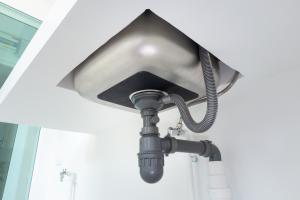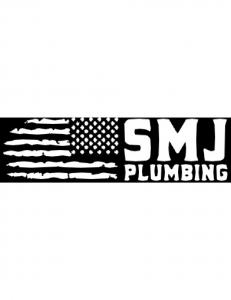How to Unclog a Sink Without Damaging Pipes
Stephen Jordan, owner of SMJ Plumbing in Slidell, Louisiana, outlined the importance of using the correct method based on the severity and location of the clog.
"Every clog is different. Some are near the drain opening and easy to access. Others may be deeper in the system and require a more cautious approach to avoid pipe damage," said Jordan.
The first step in any safe unclogging process is identification. Clogs located near the surface typically involve hair, soap residue, food particles, or grease buildup. These can often be managed with basic tools. Deeper clogs may involve accumulated debris in the trap or even mineral buildup in the drain line, which requires a more thorough assessment.
A plunger designed for sink use is a suitable tool for many minor clogs. Creating a tight seal and using controlled, vertical motions can help dislodge blockages. It is important to block adjacent drains—such as the overflow or a second basin—with a wet cloth to ensure pressure builds where needed.
A drain snake, or auger, is effective for tougher obstructions. Manual models are often enough for bathroom sinks, while longer, crank-operated versions are better suited for kitchen sinks or utility basins. Care should be taken not to force the cable aggressively, as this can scrape pipe walls or become entangled in fragile plumbing joints.
Hot water and dish soap may assist in breaking down grease-based clogs, especially in kitchen drains. A mixture of boiling water and a small amount of degreasing soap can be poured slowly into the drain, followed by a flush of hot tap water. This method should be avoided in homes with PVC piping, as excessive heat can soften or warp plastic components.
Baking soda and vinegar, often recommended in do-it-yourself circles, can produce temporary fizzing that may dislodge loose debris. However, this reaction is not always strong enough to clear solid blockages and may be more effective as a preventive maintenance technique rather than a solution for existing clogs.
Chemical drain cleaners present greater risks. While widely available, many contain caustic substances that generate heat and chemical reactions within the pipes. These can damage older plumbing systems, corrode joints, and weaken seals. In systems with partial clogs, chemical cleaners may remain trapped in one section, causing concentrated damage over time.
If a sink remains clogged after initial attempts using mechanical tools and hot water methods, disassembly of the P-trap may be necessary. This U-shaped pipe located under the sink often collects debris and is a common clog point. A bucket should be placed beneath the trap before loosening the slip nuts. The trap can then be removed, cleaned, and reinstalled carefully to avoid leaks.
Pipe inspection may be required for chronic or deep-set clogs. Blockages caused by root intrusion, pipe collapse, or improper slope often produce symptoms beyond slow drainage—such as gurgling sounds, backflow, or multiple slow fixtures. In such cases, camera inspection or hydro-jetting performed by a licensed plumber may be the safest approach.
In multi-level buildings or older properties, galvanized steel or cast iron pipes may complicate clog removal. These materials corrode internally over time, narrowing the pipe diameter and increasing the risk of obstructions. Aggressive snaking or chemical use can worsen the condition of already compromised pipes.
Proper ventilation and drainage design also influence clog frequency. Vents allow air to enter the system, maintaining pressure balance and helping wastewater flow efficiently. Blocked vents or poorly sloped drain lines contribute to recurring clogs and should be evaluated if problems persist.
Preventive measures remain the most effective way to reduce clog incidents. Sink strainers help capture hair, food, and debris before they enter the pipes. Grease should never be poured down drains, even in liquid form, as it solidifies upon cooling and adheres to pipe walls. Periodic flushing with hot water and mild detergent supports pipe cleanliness.
SMJ Plumbing in New Orleans continues to provide guidance on safe and effective plumbing maintenance across residential and commercial settings. Emphasis is placed on choosing methods that resolve issues without introducing additional risks to the plumbing system.
Understanding how to address sink clogs properly protects pipes from unnecessary damage and extends the service life of the entire drainage system. Careful method selection based on clog type, pipe material, and plumbing layout ensures better outcomes and fewer complications.
Morgan Thomas
Rhino Digital, LLC
+1 504-875-5036
email us here
Visit us on social media:
Facebook
Legal Disclaimer:
EIN Presswire provides this news content "as is" without warranty of any kind. We do not accept any responsibility or liability for the accuracy, content, images, videos, licenses, completeness, legality, or reliability of the information contained in this article. If you have any complaints or copyright issues related to this article, kindly contact the author above.
Alexandra Donnadio, LEO, Famed Chef and Veteran Advocate to be featured in Trudy Jacobson's Great American Warriors
AGII Deploys Intelligent Security Systems to Strengthen Decentralized Integrity
Agility Capital Holding Inc. 2024 Annual Report Filed
Kalendarium
Więcej ważnych informacji
 Jedynka Newserii
Jedynka Newserii

 Jedynka Newserii
Jedynka Newserii

Ochrona środowiska

Zielona transformacja wiąże się z dodatkowymi kosztami. Mimo to firmy traktują ją jako szansę dla siebie i Europy
Bez zaangażowania największych firm, które ograniczają własny ślad węglowy, będzie trudno o transformację energetyczną. Jak wynika z danych Europejskiego Banku Inwestycyjnego, w ubiegłym roku 61 proc. przedsiębiorstw z UE zainwestowało w walkę ze zmianą klimatu. Choć z tymi inwestycjami wiążą się zwykle ogromne koszty, część firm traktuje je jako szansę na podniesienie swojej konkurencyjności. Wśród znaczących korzyści podnoszą też kwestię zmniejszania zależności od dostaw surowców energetycznych z innych krajów.
Prawo
Rolnicy z Wielkopolski i Opolszczyzny protestują przeciwko likwidacji ich miejsc pracy. Minister rolnictwa deklaruje szukanie rozwiązań

W czwartek 24 kwietnia pracownicy towarowych gospodarstw rolnych z województw wielkopolskiego i opolskiego protestowali przed Ministerstwem Rolnictwa i Rozwoju Wsi w Warszawie. To już kolejny – po poznańskim – protest, który ma zwrócić uwagę na opieszałość urzędników w związku z zagospodarowaniem zwracanych do Zasobu Skarbu Państwa dzierżawionych gruntów, na których dziś prowadzona jest działalność rolnicza. Minister Czesław Siekierski przyjął delegację pracowników, która przekazała petycję z postulatami wymagającymi pilnych działań urzędniczych.
Prawo
W połowie maja pierwszym pakietem deregulacyjnym zajmie się Senat. Trwają prace nad drugim pakietem

Zgodnie z zaplanowanym porządkiem obrad na posiedzeniu 14–15 maja Senat zajmie się pierwszym pakietem deregulacyjnym, przygotowanym przez Ministerstwo Rozwoju i Technologii. Przyjęty w ubiegłym tygodniu przez Sejm dokument zawiera około 40 rozwiązań, które mają ułatwić prowadzenie biznesu. W ciągu kilku miesięcy efekty mają być odczuwalne dla przedsiębiorców. Jednocześnie trwają już prace nad kolejnymi propozycjami deregulacyjnymi.
Partner serwisu
Szkolenia

Akademia Newserii
Akademia Newserii to projekt, w ramach którego najlepsi polscy dziennikarze biznesowi, giełdowi oraz lifestylowi, a także szkoleniowcy z wieloletnim doświadczeniem dzielą się swoją wiedzą nt. pracy z mediami.






![Europejskie miasta planują wzrost inwestycji w infrastrukturę społeczną. Wydatki na niskoemisyjny transport wciąż są niewystarczające [DEPESZA]](https://www.newseria.pl/files/1097841585/panel-dotacje-foto,w_85,_small.jpg)


.gif)

 |
| |
| |
|